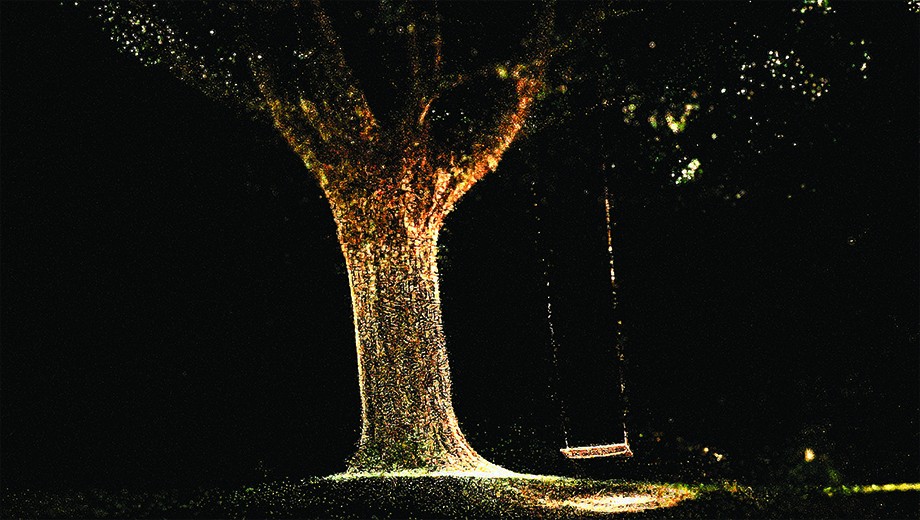You can distinguish different philosophical problems pertaining to AI. You have issues of AI ethics: What kinds of constraints do we need to impose on AI? What about AI biases? From a theoretical perspective, you can ask what it would be for a computer system to be intelligent. My area, philosophy of language, is concerned with our ability to communicate. When it comes to a large language model such as ChatGPT, the question is, “Do these things actually speak?”
Linguists and philosophers of language these days have a specific idea about how information is encoded in human communication. Semanticists, in particular, have a specific proposal for how the meanings of individual words are to be modeled using set-theoretic constructions—for the word car, it would be the set of objects that are cars—which are put together according to certain syntactic rules. Whatever ChatGPT is doing, it can’t be doing that. For ChatGPT, the meaning of car is a very complex vector, represented mathematically, that determines how likely car is to occur as the next word in a sentence. This is a very different conception of what the meaning of a word is.
In the philosophical tradition called externalism, humans’ ability to refer to the world is actually remarkably cheap. You don’t really need to know much about what you’re talking about to be able to talk about it. [UCLA philosopher] Tyler Burge has this example where a patient comes to the doctor’s office and says, “I have arthritis in my thigh.” This is clearly false because arthritis is in the joints, but the doctor can engage with this kind of statement, and the patient is clearly referring to the world in some way. Externalists are saying that you can rely on the competence of others to meaningfully refer to things in the world. And if that is right, then the real question is whether large language models can exploit processes in a linguistic community that we, as humans, have exploited all along. Suppose ChatGPT is working on Wikipedia entries. It’s working on information provided by ordinary speakers. So it would be parasitic—but we’re all parasites.
We can all be parasites, but there still needs to be some intention on our side. At a minimum, you need to have an intention of using the word in the same way as it is used by your linguistic community. So there is this very interesting question of whether or not large language models, or any kind of computer, could have this kind of intention. And what would that look like? How do you check?
Marc Downie is a digital artist and an associate professor of practice in the arts in Cinema and Media Studies. His studio, OpenEndedGroup, has presented work at Lincoln Center, York Minster Cathedral, MoMA, the Hayward Gallery, ICA Boston, and many other venues.
I ended up doing AI to become a better artist. I wanted a relationship with computation that was deep and sincere and exploratory. Any fool can make a computer program that is unpredictable. The challenge is, having had the computer surprise you—with an image, a movement, a speed, or an intensity—to then say, “I’d like more of that, please,” or, conversely, “That thing that you did is really boring or ugly. Don’t ever do that.” You build up some categories that are completely local to the piece and start building structures using these elements that you haven’t planned ahead of time.
In my studio, we often find ourselves chasing and finding the same high: working hard, preparing tools and strategies, and using weird programming languages and new bits of hardware to get to a place where the computer will delight us, and we can then fold that delight back into a piece and make more of it.
We had a commission from UChicago Presents for a piece that premiered in October [BlackLetter, a combination of 3D cinema with a live performance of violin and dance]. We had the opportunity to put Jodi Melnick, who has had a pivotal role in the New York dance scene for decades, under the microscope. We put her in a capture scenario with five or six cameras, recorded it, analyzed it, built stereoscopic presentations of it, built depth maps of it, analyzed the motion, and allowed neural networks to respond to her shapes. It was a real thrill to make, but without AI looking over our shoulder, offering advice and suggesting frames, we’d have had no meaningful access to the material we’d captured.
Before generative AI, the term generative had often been reserved for works that have absolutely no reference—making beautiful patterns using nothing more than trigonometry, for example. Based on this, people like me, making computational and software pieces out of things sensed by cameras or microphones—interacting with things, or visualizing things—would not be doing generative art. But that’s slowly being turned on its head, because today’s generative neural networks are obviously creating something out of vast knowledge. They do have a reference, but it is compressed and bound up inside them.

